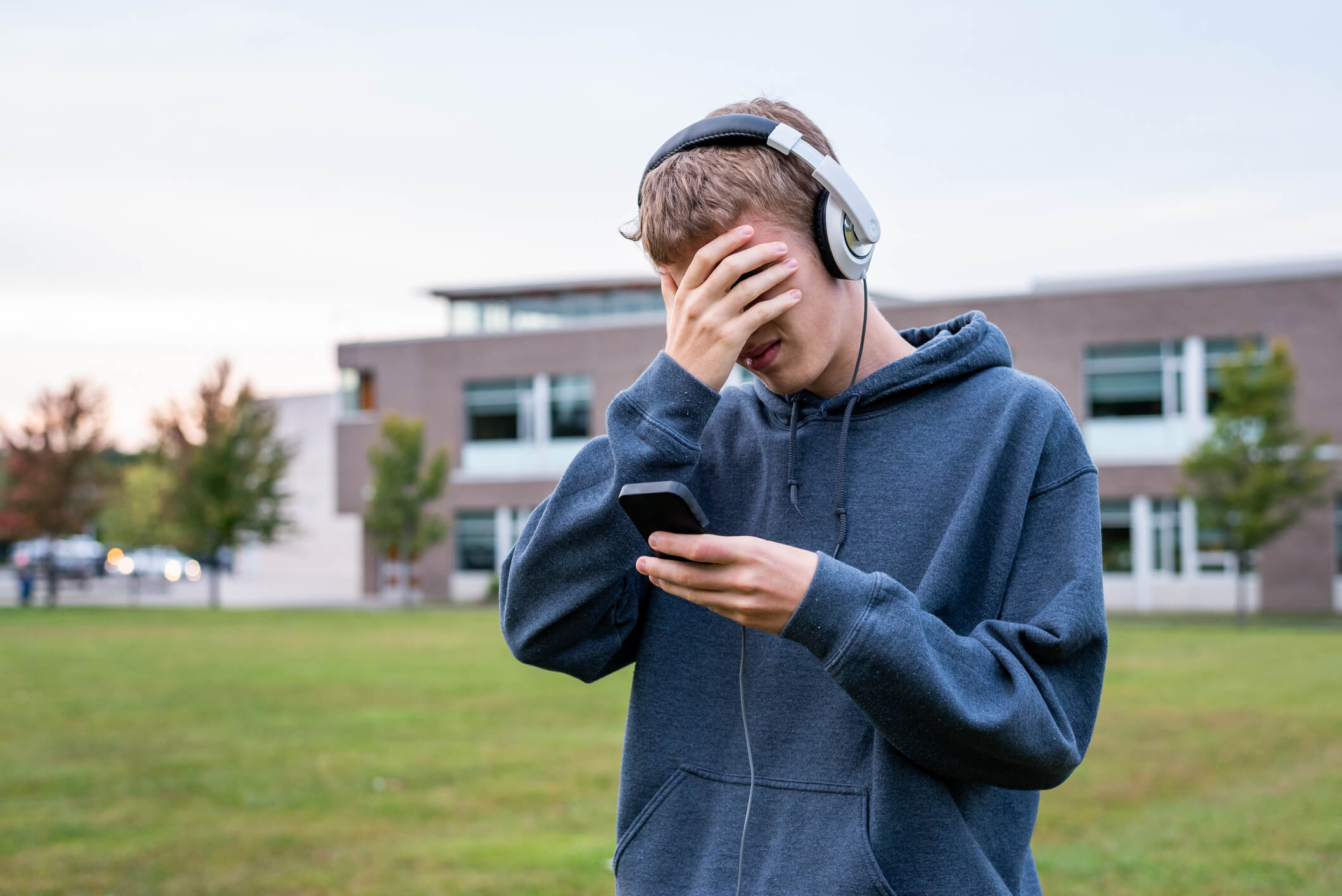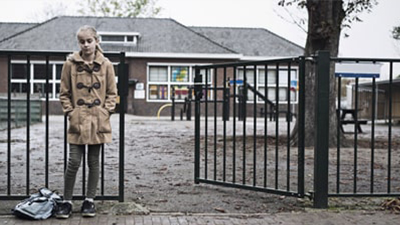The Dangerous Craze of ‘Patterning’

In this article, Sara Rawnsley, former headteacher, looks at the growing and worrying trend of child-on-child attacks, filmed and uploaded to social media.
What is Patterning?
'Patterning', is a term used to describe behaviour where children film child-on-child violent assaults and share the footage on social media platforms. The practice of 'patterning' is specifically carried out with the deliberate intention of embarrassing victims even further by making the video footage across the web.
Incidents of 'patterning' are on a worrying upward trend. The National Bullying Helpline has reported an increase in calls relating to their service, describing the reported behaviours as an 'increasingly popular, but sickening, trend'.
'Patterning' is an extension of bullying by individual bullies and / or gangs seeking power and attention who, by using social media, are able to publicly ridicule victims beyond the confines of the playground to national and international audiences. Patterning is seen as 'sport', an amusement for the perpetrators without any consideration of the impact sharing such footage has on their victims. The helpline describes an increase in contact by parents of victims, who report that they 'often struggle to persuade a school to believe them and/or take it seriously, investigate or deal with the perpetrators.'
Patterning in the News
Last year, the BBC reported that children as young as 11 had been subjected to brutal attacks by teenagers in a Lancashire town, where such assaults were filmed and shared on social media. The report stated that victims' mothers felt that the police response failed to stop the group, despite repeated calls to 999, and that there didn't appear to be any 'urgency' to arrest the assailants. One mother stated that it took two weeks for an officer to visit her child and family. This resulted in the mothers of the attacked children holding a protest outside the Chorley police station in Chorley. Subsequently they have formed a group, who have been proactively patrolling the park where the attacks occurred.
Similarly, this April, Sky News reported another such attack, this time in Rochdale where a 13-year-old girl who was dragged to the ground by her hair and kicked in the head by other youngsters whilst being filmed, then shared online. As the report detailed, the victim, who was on her way home from school, was attacked within metres of the school gates whilst a large group of children shouted and jeered.
Such attacks are shocking, especially as the only motivation for the behaviour is notoriety on social media platforms. The impact of such planned and violent behaviour means victims are not just physically hurt but also receive mental scars which leave them scared, isolated and too afraid to leave their homes unaccompanied. One such victim was diagnosed with PTSD. Victims are humiliated by the sharing of the content as it spreads around a community.
The legal guardian of the latest victim reportedly told Sky News that the perpetrators '…pick on someone who's normally quiet, somebody who doesn't bother anybody, they'll then use that person as a target to create this online content. And it's getting more vicious as each attack comes. I don't believe my sister has any long-running rivalries within the school. I believe this was created solely for the content of the internet.' He added, 'A child is going to lose their life from this craze. It's happening all over the country.
Most often, these attacks are out of school, in the local community, so what role can schools play to address this growing craze?
The Home Office published Preventing youth violence and gang involvement - Practical advice for schools and colleges April 2013. Whilst this advice is now dated, there are key messages which are still relevant. What is important is that this behaviour is in the realm of 'gang-culture' and should, therefore, be treated as such, in partnership with the Police and other relevant agencies.
The advice states that preventing violence in schools and colleges requires a mix of universal, targeted or specialist interventions and advises school and college leaders to:
- Develop skills and knowledge to resolve conflict as part of the curriculum;
- Challenge aggressive behaviour in ways that prevent the recurrence of such behaviour;
- Understand risks for specific groups, including those that are gender-based, and target interventions;
- Safeguard, and specifically organise child protection, when needed;
- Carefully manage individual transitions between educational establishments, especially into Pupil Referral Units (PRUs) or alternative provision; and
- Work with local partners to prevent anti-social behaviour or crime.
Preventing Violence
The advice also highlights the need to tackle and prevent violence affecting schools or colleges and the community by making it explicit that it is important to:
- Understand the problems that young people are facing both in school/college and in their local community;
- Consider possible avenues of support;
- Work with local partners (who may have valuable information, resources or expertise).
The guidance points to the need for 'early intervention', which includes anti-bullying, by designing a curriculum which enhances the social and emotional skills of young people, for example, a curriculum which includes the teaching of conflict resolution skills, the understanding of risk in situations as well as what violence and abuse is and how young people can get help.
Understanding the 'patterning' issue
The advice makes it clear that there is a need to fully understand the issues which are affecting a local area and having this in-depth knowledge should help to formulate any action. The information collected should cover:
- The scale and nature of youth violence;
- Who is involved;
- What may already be in place to help young people;
- Where there may be gaps.
There needs to be a multi-agency approach, working with the local community safety partnership, the youth offending team, the Safer School Partnership officer or the neighbourhood police team. Likewise, using the Early Help system to formulate an Early Help plan for perpetrators and counselling support for victims.
Working with other local partners to address patterning
The advice makes it clear that dealing with gang or youth violence issues in an area is a shared responsibility for the community and partner agencies. Therefore, schools and colleges should be able to get advice and support from their local partners, such as the police, youth offending teams, other local authority teams or the voluntary and community sector. The Local Safeguarding Children Board (LSCB) may also have a strategy to address these issues.
The advice states that the work of the local community safety partnership is key and that they should be able to:
- Give advice on whether there are any safer communities' activities currently underway and what the school or college might do to complement, support or interact with them;
- Keep schools/colleges informed about the numerous ways that gang members can control, intimidate and or influence pupils in the school/college environment;
- Identify young people who are subject to court orders and what schools/colleges may need to know;
- Manage an 'alert' system on local problems that may affect the school/college or put young people at risk;
- Offer specialist advice on particular problems, for example, gang-associated girls;
- Share relevant information about pupils/students outside of the school or college environment (for example, whether they are displaying any risky behaviours that have come to the attention of the wider partnership);
- Support the provision of effective early help, promote the welfare of pupils and students, and protect them from harm;
- Develop a multi-agency response.
Young people's involvement in violence is not a new problem, this craze of 'patterning' is the latest one. Lots of approaches to tackling this issue have already been tried, with success.
Approaches that have strong evidence of success include:
- Mentoring
- Mentoring (where a mentor works closely with an individual to give advice and help to identify and solve problems) can prevent future behavioural problems if it is done well.
- Bullying prevention
- Anti-bullying programmes (for example, the Olweus Bullying Prevention Programme and KiVa10) can reduce reported victimisation.
- Improving social skills
- Improving social skills can strengthen school attachment and raise achievement, and can also reduce anti-social/ aggressive behaviour and prevent future violence.
- Involving parents
- programmes that work with both parents and young people have been shown to be successful in reducing behavioural problems and preventing violence.
- Cognitive behavioural therapy (CBT)
- Well-administered CBT (for example, anger-coping skills training, problem-solving skills training) has been shown to be effective in addressing aggression and conduct disorders in pre-adolescents.
By being proactive, including considering employing such approached, leader and managers of schools and colleges can address this trend of problematic behaviour from further escalation.
Sara Spinks
SSS Author & Former Headteacher













